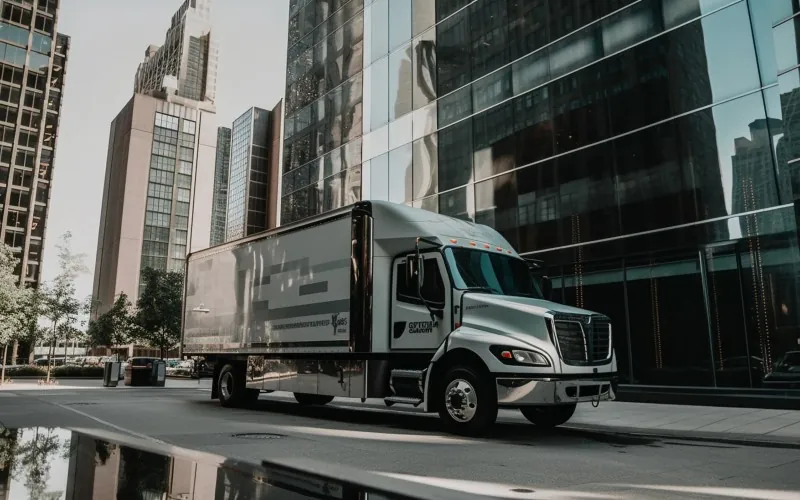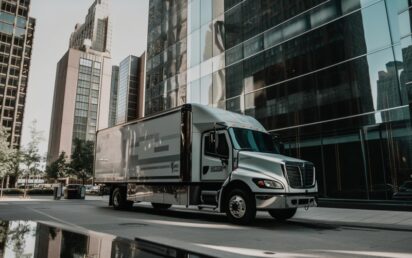Running a commercial fleet comes with endless responsibilities. Between managing drivers and meeting deadlines, insurance can easily take a back seat. But auto liability coverage isn’t something you can afford to overlook. One accident could lead to costs that put your entire business at risk. Let’s explore why this coverage matters and how it keeps your operations protected.
Auto Liability Coverage at a Glance
Auto liability coverage pays for injury and property damage costs when your commercial vehicles are at fault. Most policies split into two core parts:
- Bodily Injury Liability
It covers medical expenses, legal fees, and similar costs. This applies if another person is hurt in an accident where your business is legally responsible.
- Property Damage Liability
Helps pay for repairs or replacements if your vehicles damage someone else’s property, anything from another car to a building.
Because these expenses can skyrocket into the millions, every U.S. state mandates at least some level of auto liability coverage. But minimum requirements vary, and what’s legally allowed in one state might be too low for your actual risk.
Who Needs It?
Any organization that uses vehicles to conduct business should consider auto liability coverage non-negotiable. This includes:
- Trucking Companies hauling freight across multiple states
- Local Delivery Fleets using cargo vans for short-distance parcels
- Contractors running pickup trucks to job sites
In each case, a single collision could unleash costs that exceed your financial reserves. While you might already have coverage, the bigger question is how much to carry. Think about the routes you drive and the cargo you transport. Busier roads or specialized materials often require higher liability limits.
Key Advantages of Proper Coverage
Adequate auto liability insurance offers more than mere legal compliance:
Financial Security
The policy helps cover injury-related bills and legal fees. This protection shields your bottom line from potentially catastrophic losses.
Business Continuity
When you have coverage, you’re better positioned to handle unforeseen events, ensuring that operations can continue with minimal disruption.
Reputation Management
A well-managed accident claim, supported by ample coverage, shows employees, partners, and the public that you run a responsible enterprise.
Coverage alone can’t prevent accidents, but it does provide a financial cushion that can keep you in business when incidents occur.
Partnering With the Right Insurer
An experienced insurer that focuses on commercial auto can be invaluable. Some carriers cater specifically to transportation fleets, providing quick underwriting and flexible terms that adapt as your business evolves. One example is STAR Mutual RRG with a risk retention structure often leading to competitive rates. Regardless of which company you choose, look for:
- Multi-State Expertise: Verify that they understand the patchwork of state regulations.
- Streamlined Claims Process: Quick settlements reduce downtime for vehicles that need repairs.
- Relevant Industry Experience: If you haul specialized cargo, align with an insurer that recognizes unique risks.
Finding the right partner is more than just securing a policy. It’s about building a relationship that supports your growth, helps manage emerging risks, and remains transparent about costs.
Customizing for State Regulations
Traveling through multiple states amplifies the importance of precise coverage. Some states only mandate minimal liability, but that might not be enough if you’re hauling expensive freight or driving through densely populated areas. Keep an eye on:
- State Minimums vs. Your Actual Risks
Meeting the legal bar won’t help if an accident claim far exceeds those limits.
- Interstate Requirements
Uniform coverage that meets or surpasses every state’s rules ensures consistent protection.
- Periodic Reviews
As laws and your routes change, revisit your policy to verify you haven’t outgrown its limits.
A knowledgeable insurer can help you navigate local variations, so you’re not blindsided by a claim that isn’t fully covered.
Steps to Building a Robust Liability Strategy
Insurance isn’t just about grabbing the cheapest policy. It demands a thoughtful plan:
- Assess Your Fleet’s Risk Profile
Do you carry fragile items, flammable substances, or standard freight? Each category shifts your risk level.
- Examine Past Incidents
If you’ve encountered collisions or close calls, figure out the causes. Was it driver fatigue, equipment failure, or weather? Address those root issues to improve safety.
- Update Coverage as You Grow
Fleets evolve. Adding trucks, altering routes, or scaling up your business all mean your liability demands could change.
- Invest in Driver Training
Fewer accidents translate into fewer claims, which often results in better long-term premium rates.
When you customize your approach, you’re less likely to face a shortfall if an accident tests the limits of your policy.
Cost-Saving Approaches
Though coverage can be a major expense, there are ways to control premiums while keeping adequate protection:
- Telematics Data
Install devices that track driving habits such as speed, hard braking, and fuel usage. Demonstrating safe practices can lead to premium discounts. - Safety Incentives
Reward drivers who maintain clean records. Reduced collisions typically translate to more favorable insurance deals. - Bundled Policies
Some insurers will lower overall costs if you combine auto liability with cargo coverage or general liability, so it’s worth exploring a package deal.
These measures aren’t just about cutting costs. They also boost your reputation as a safety-conscious operation, which can attract more business.
Final Thoughts
Auto liability insurance is what keeps your business moving when accidents happen. The right coverage helps you avoid costly setbacks and focus on growing your fleet. Stay proactive, review your policy often, and invest in safety. This approach will protect your business today and strengthen it for the future.


